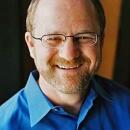The Guru of Wine
- Share via
Kermit Lynch, the sweet contrarian who proved to Americans that there is life after Chardonnay and Cabernet Sauvignon, stood in front of the standing-room-only crowd at The Wine Country, a new Long Beach store, and begged a little kindness: “My aunt is here, and I know she will tell my mother everything.”
The Bay Area wine importer, who has waged a 25-year campaign against the wine world’s high and mighty, not to mention the polished and filtered, didn’t need to ask. Judging strictly by the number of people clutching well-thumbed copies of Lynch’s book, “Adventures on the Wine Route: A Wine Buyer’s Tour of France,” (Farrar, Straus & Giroux, 1988), he was speaking to the converted.
When Lynch, during this rare Southern California public appearance, spoke about seeking personality in wine, he was applauded even by the guy who later asked what tannin is.
Although he owns a wine store in Berkeley, Lynch made his reputation as an importer (The Wine Country owner Randy Kemner was once the Southern California rep for Lynch’s company), searching out and even helping create wines that were made counter to the accepted wisdom. While the wine world was rushing to technologically advanced “international” wines, filtered to a high sheen and aged in new oak, Lynch was prowling the then lesser-known regions of the Rho^ne, Provence and the Loire, looking for wines of character. In the process, he created a whole new kind of foodie icon--artisanal winemakers like Gerard Chave, the Peyraud family of Domaine Tempier and Charles Joguet.
To be honest, though, he didn’t seem much like a kingmaker Tuesday night. Addressing a crowd that included everyone from sports-shirted wine geeks to black-clad wine bohos, with some nice people who’d just driven down from Downey thrown in for good measure, Lynch spoke with gentle humor, even as he drilled holes in some highly touted hides.
*On California wine in general: “What they do now is purposely leave the wine a little sweet to mask the high alcohol that makes the wine ‘big’ so the critics will love it.”
*On American wine writers: “You’ll rarely hear an American critic talk about finesse or harmony.”
*On the critics’ darling, Marcassin Chardonnay: “Aromatically, it was without interest besides the oak, and in the mouth it was so thick I didn’t want to swallow it. I’m going to pay $70 for this?”
*On the trend toward specific glassware for different wines: “There is a big difference in the wine tasted in different glasses. But when they brought it to me, I poured a 1984 Raveneau Chablis and liked it much better in the Sauvignon Blanc glass than in the Chardonnay glass, where it tasted overblown and dull. Besides, now you need a glass cellar besides your wine cellar?”
*On the European craze for consulting enologists: “They’re also the ones who sell the equipment and the chemicals. It’s like having a doctor who’s also your pharmacist.”
Afterward, he patiently sat and signed books, while the attendees circulated through the shop, tasting delicious wines that might have remained merely hard-to-pronounce names in obscure books if it had not been for Lynch: Mas Champart, Chinon, Vacqueyras, Coteaux d’Aix-en-Provence and Bandol.
More to Read
Eat your way across L.A.
Get our weekly Tasting Notes newsletter for reviews, news and more.
You may occasionally receive promotional content from the Los Angeles Times.











